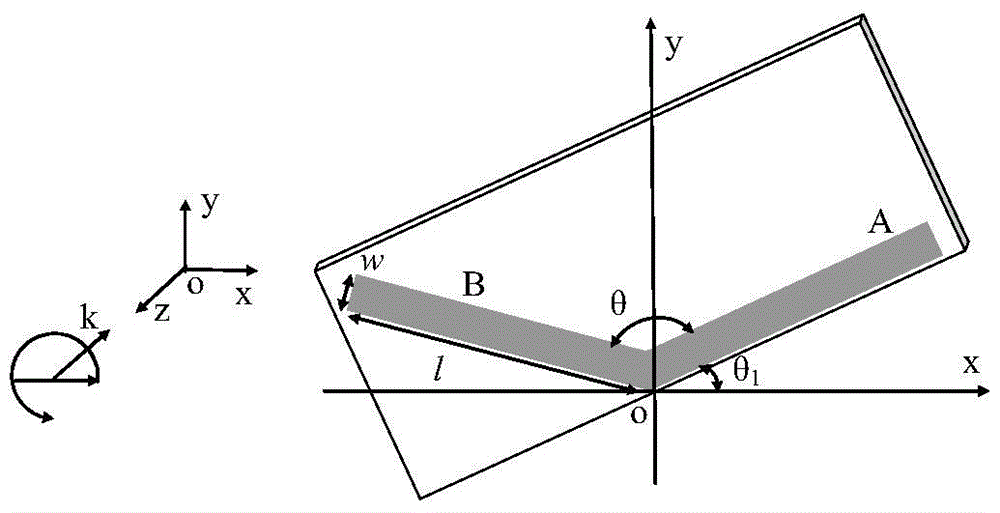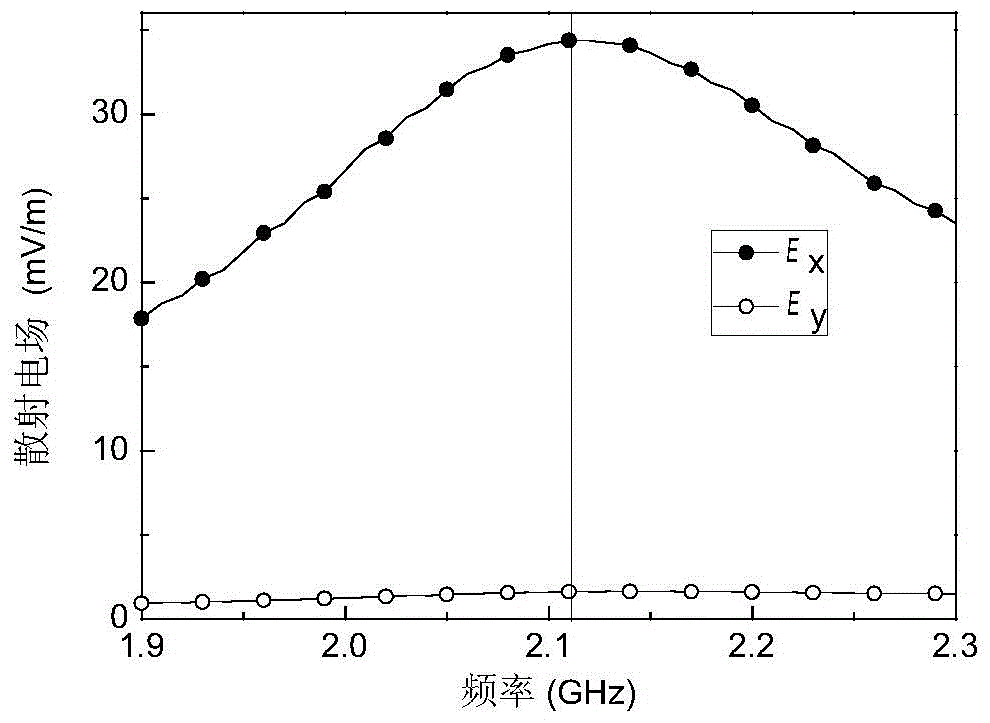An IoT-Oriented Angle Sensor
An angle sensor and Internet of Things technology, which is applied in the field of angle sensors for the Internet of Things, can solve the problems that the address information cannot be carried, the angle sensor cannot sense and transmit information with radio frequency technology, and cannot be directly applied to the Internet of Things, so as to improve spectrum utilization. The effect of high efficiency, simple structure, and narrow occupied frequency band
- Summary
- Abstract
- Description
- Claims
- Application Information
AI Technical Summary
Problems solved by technology
Method used
Image
Examples
Embodiment Construction
[0026] The present invention is described in more detail below in conjunction with accompanying drawing example:
[0027] Such as figure 1 As shown, the angle sensor oriented to the Internet of Things of the present invention is covered with a V-shaped scattering unit on a layer of medium, and placed on the xy plane. The dielectric is Rogers 4350 with a dielectric constant of 3.48 and a thickness of 0.8 mm. The V-shaped scattering unit consists of two metal arms A and B, both of which are 28.7×1mm in size 2 . The angle θ between A and B is used to encode address information. Angle θ between arm A and the positive direction of x-axis 1 Represents real-time angle information. The angle sensor is excited by a circularly polarized plane wave propagating along the -z direction, and the antenna of the receiving system is a dual-polarized antenna with polarization directions in the x and y directions;
[0028] figure 2 shows the address information of the angle sensor as 011 ...
PUM
 Login to View More
Login to View More Abstract
Description
Claims
Application Information
 Login to View More
Login to View More - Generate Ideas
- Intellectual Property
- Life Sciences
- Materials
- Tech Scout
- Unparalleled Data Quality
- Higher Quality Content
- 60% Fewer Hallucinations
Browse by: Latest US Patents, China's latest patents, Technical Efficacy Thesaurus, Application Domain, Technology Topic, Popular Technical Reports.
© 2025 PatSnap. All rights reserved.Legal|Privacy policy|Modern Slavery Act Transparency Statement|Sitemap|About US| Contact US: help@patsnap.com



